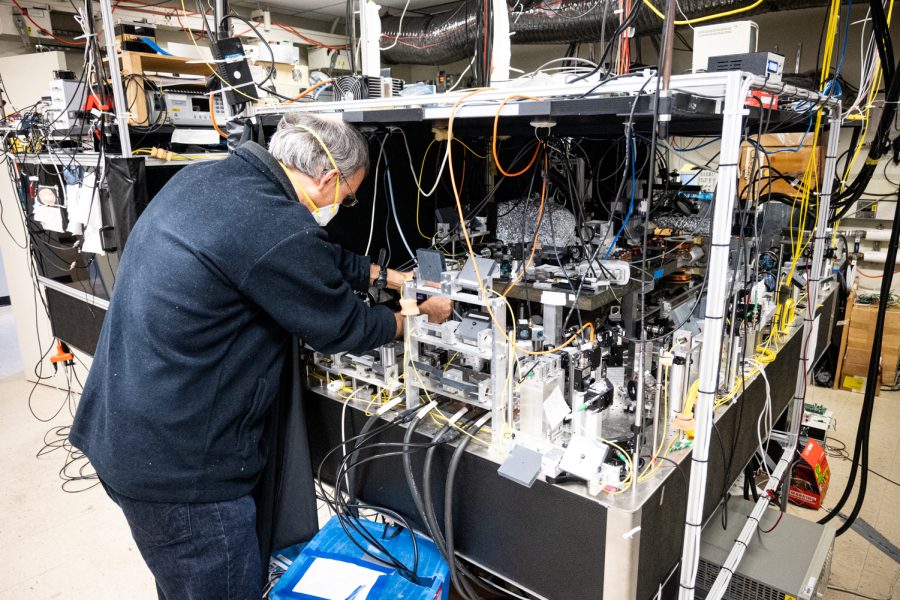WSU researchers use atom laser to create caustic patterns
Findings could lead to precise tools; caustics produced from traditional means not possible on Earth
February 3, 2022
WSU researchers discovered atoms cooled to near absolute zero temperatures create reflective patterns similar to light and can be focused into caustic shapes.
The laws of physics drastically change under extreme circumstances, such as nanoscale dimensions. These laws also change in quantum mechanics, where the hallmark phenomenon is particles can behave like waves, said Peter Engels, WSU Yount distinguished professor and senior author of the study.
“We take a clot of atoms and cool them down to temperatures that are just a few billionths of a degree above absolute [zero],” Engels said. “Then we can make objects that are fairly large and show us funny quantum mechanical behavior — atoms behave like waves.”
This phenomenon can form interference patterns. One example of this is the bright stripes found at the bottom of a swimming pool, where they move around but do not disappear, he said.
“We have actually devised the technology here where we can make the clot of atoms stream as if it were a laser beam,” Engels said. “So, therefore, we call it an ‘atom laser’ because it’s a stream of atoms just like light. And we can create these caustic patterns.”
There are many different applications for these findings, he said. One possibility is creating very precise measurement tools, particularly for studying certain materials. Developments like these will also guide the development of new tools and devices, such as timekeeping tools.
Normally, it is possible to achieve caustics with light optics, but an atom laser presents some new things that can be done, said Michael Forbes, associate professor of physics and astronomy and co-author of the study.
For example, caustics produced by traditional means are not possible on Earth and can only be seen from space, Forbes said. However, the atom laser makes it easy to produce caustics.
“The main thing we’re trying to establish here is that experimentally, we can set up a system with this beam of atoms,” he said. “Then we can stick potentials, and we can focus those … all with an appropriate theory.”
Quantum mechanics are currently driving a technological revolution, Engels said. MRI scans and smartphones are just a couple of things that use quantum mechanics.
“The fact that we can do the experiments as they are done over here, that was unthinkable just 100 years ago,” he said.
Engels said the study was an interesting and new direction for his group because it was the first time they had entered the region of atom lasers.
Future directions of the study will include optimizing the techniques in order to see different types of caustics and also think of different applications, Forbes said.










